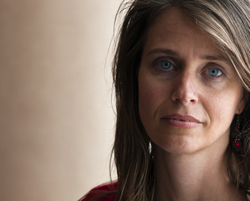
Scars left behind by childhood cancer treatments are more than skin-deep. The increased risk of disfigurement and persistent hair loss caused by childhood cancer and treatment are associated with emotional distress and reduced quality of life in adulthood, according to a new study led by a Northwestern Medicine advanced practice nurse, Karen Kinahan, and based on data from the Childhood Cancer Survivor Study (CCSS).
The largest study of its kind, published May 21 in the Journal of Clinical Oncology, compared scarring, disfigurement and persistent hair loss reported by adult survivors of childhood cancer to their siblings, who were not childhood cancer survivors.
Here are some of the study’s findings, controlling for cranial radiation, which has been linked to psychosocial distress in the past:
• Survivors with persistent hair loss were found to have increased risk of anxiety
• Female survivors with persistent hair loss had increased risk of depressive symptoms
• Survivors with a head or neck, arm or leg disfigurement had increased risk of depression
“The results show that cancer treatments can affect childhood cancer survivors’ physical appearances and their quality of life long after they turn 18,” said Kinahan, RN, APN,P-CNS and first author of the study. “I have patients who are asymmetrical because of radiation treatments, others with scars on their faces and necks from biopsies and surgeries and some who’ve had the amputation of a limb.”
As a clinical nurse specialist specializing in pediatric oncology at the Robert H. Lurie Comprehensive Cancer Center of Northwestern University, Kinahan helped start the STAR Program (Survivors Taking Action & Responsibility) at the Lurie Cancer Center in 2001. It is a comprehensive long-term follow-up program for adult survivors of pediatric cancer that follows these patients for their chronic medical and psychological conditions into adulthood.
For this study, more than 14,000 childhood cancer survivors, all participants in the national CCSS, were surveyed with two questionnaires. The baseline was administered in 1992 and another in 2003. Information related to cancer treatment was abstracted from the survivors’ medical records. Half of the survivors were asked to nominate their nearest age sibling for the comparison group. More than 4,000 siblings participated in the study.
The survivors, all of whom were treated between 1970 and 1986, filled out self-reported questionnaires about head/neck, arm/leg, and chest/abdomen scarring, disfigurement and persistent hair loss they have suffered.
Psychological distress and quality of life data were taken from the 2003 survey. Distress was evaluated using an 18 item self-report measure of symptoms over the prior seven days. Quality of life data was evaluated using a 36-item self-reported measure of general health over the prior four weeks.
Surrogates completed the baseline questionnaire for survivor participants who had either cognitive limitation, were deceased or were younger than 18 years of age.
“The results of this study help illustrate the complex chain of events childhood cancer can have on quality of life as an adult,” said senior author Kevin Krull, PhD, an associate member in the St. Jude Children’s Research Hospital departments of epidemiology and cancer control and psychology “We have long been aware that radiation therapy is associated with increased risk for emotional distress and social problems, though we did not fully understand the process this involves. The current study begins to map this process.”
Future studies are needed to more clearly understand the impact of scarring, disfigurement, and persistent hair loss upon body image, emotional health, and the quality of life of childhood cancer survivors, Kinahan said. However, the results of this first-of-a-kind study are important for practitioners in the field of pediatric cancer care, she said.
“We need to be more aware, so that interventions facilitating coping skills, emotional adjustment and management strategies can be implemented for patients at highest risk,” Kinahan said. “A natural next step would be to make efforts to minimize alterations to the physical appearance of pediatric cancer patients during diagnosis and treatment.”
This study was supported by the National Cancer Institute, St. Jude Children’s Research Hospital, and ALSAC.






